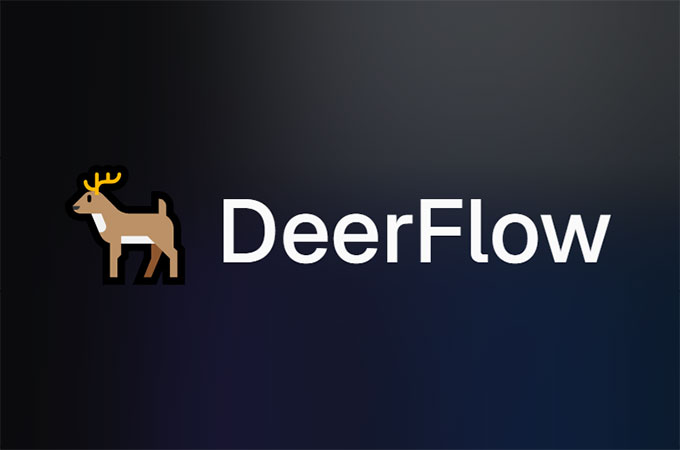A Research Revolution Unveiled
Imagine you’re a researcher drowning in tabs, juggling web searches, code snippets, and half-written reports. On May 9, 2025, ByteDance, the tech giant behind TikTok, open-sourced DeerFlow, a multi-agent AI framework that feels like hiring a tireless research team. Built on LangChain and LangGraph, this tool automates deep research, churning out reports, podcasts, and even PowerPoint slides in minutes, all while letting you steer the ship.
Announced via X by@ByteDanceOSS, DeerFlow—short for Deep Exploration and Efficient Research Flow—has sparked excitement, with users like@yichaocheng calling it a “game-changer” for its seamless integration of AI and human input. “It’s like having a team of experts who never sleep,” says Asif Razzaq, CEO of MarkTechPost. So, how does this framework turn chaotic research into polished outputs?
The Machinery of DeerFlow
Think of DeerFlow as a digital orchestra, with each AI agent playing a specialized role under a conductor’s baton. Its modular architecture, rooted in LangGraph, breaks research into manageable chunks. The Coordinator acts as the entry point, managing the workflow like a project manager. The Planner maps out tasks, while the Research Team—split into Researchers for web searches and Coders for data crunching—gathers and processes information. Finally, the Reporter weaves it all into a cohesive output, whether it’s a report, podcast script, or slide deck.
DeerFlow’s power lies in its tools. It integrates web search engines like Tavily and Brave, crawls websites for data, and runs Python code for analysis, all while supporting over 100 language models via LiteLLM, from open-source Qwen to OpenAI-compatible APIs. “DeerFlow’s multi-agent setup outshines single LLMs,” notes a 2025 MarkTechPost article, citing its ability to handle complex tasks like a human team. Plus, its human-in-the-loop feature lets you tweak plans or edit outputs, much like polishing a draft in Notion.
How to Harness DeerFlow
Ready to dive in? DeerFlow is open-source under the MIT license, meaning you can tinker with it freely. Here’s a quick guide to get started, based on its GitHub and official site:
- Set Up the Environment: Clone the repository from github.com/bytedance/deer-flow. Install dependencies using Python 3.8+ and pip: pip install -r requirements.txt. You’ll need API keys for services like Tavily or OpenAI, which you can configure in a .env file.
- Run a Research Task: Use the command-line interface to start a project. For example, deerflow –task “Analyze AI trends in 2025” –output report triggers a workflow that searches the web, compiles data, and generates a PDF report. Want a podcast instead? Add –output podcast for a script and synthesized audio.
- Customize with LangGraph Studio: Open the project in LangGraph Studio to visualize the workflow. Adjust agent roles or add tools like a custom web crawler. If you hit a snag, the debugging tools highlight where things went off track.
- Edit and Share: Review the output in DeerFlow’s Notion-like editor. Tweak the report’s tone or add visuals, then export it as a PowerPoint or share it directly.
A 2025 post on X by@snifhex highlights DeerFlow’s web UI, which simplifies these steps for non-coders. Try it at deerflow.tech for a live demo. If you’re a data scientist, integrate DeerFlow with ByteDance’s Model Control Platform (MCP) for enterprise-grade automation.
A New Frontier for Research
DeerFlow’s impact could be seismic. For academics, it slashes hours spent on literature reviews. Market analysts can generate competitor reports in a fraction of the time. Even educators could use it to create engaging lesson plans with audio summaries. A 2025 Analytics Vidhya report notes that multi-agent frameworks like LangGraph, DeerFlow’s backbone, are “reshaping AI development” by enabling precise task coordination.
But it’s not flawless. Some X users, like@nileshb4u, warn that setting up API keys and dependencies can be tricky for beginners. Others question whether AI-generated reports lack the nuance of human insight. “It’s a tool, not a replacement,” says a LangChain developer quoted in MarkTechPost, emphasizing the human feedback loop as DeerFlow’s strength. Still, with AI agent adoption soaring—up 40% in enterprises per a 2024 Langfuse report—tools like DeerFlow are here to stay.
What’s next? ByteDance’s open-source move invites developers to enhance DeerFlow, potentially adding video synthesis or real-time collaboration. For now, it’s a glimpse into a future where research is less about grunt work and more about creative synthesis.
Tech Toolbox
Main References:
- Razzaq, A. (2025, May 9). ByteDance open-sources DeerFlow: A modular multi-agent framework for deep research automation. MarkTechPost.
- Arya, S. (2025, April 4). Top 7 frameworks for building AI agents in 2025. Analytics Vidhya.
Further Reading:
- “LangGraph: Multi-Agent Workflows” – LangChain Blog, 2024
- DeerFlow Documentation: github.com/bytedance/deer-flow
Recommended Subscriptions:
- @ByteDanceOSS on X for project updates
- @Marktechpost for AI research news


This sounds like an incredible tool for anyone buried in research work. The idea of having a multi-agent AI framework that can handle everything from web searches to generating polished reports is mind-blowing. I’m curious, though, how does DeerFlow ensure the accuracy of the information it gathers, especially when dealing with complex or niche topics? The integration of human input is a great feature, but I wonder if it could ever fully replace the need for human oversight. Also, how user-friendly is it for someone who isn’t a tech expert? I’d love to hear from someone who’s already used it—what’s been your experience so far? Do you think this could really change the way we approach research, or is it just another tool in the toolbox?